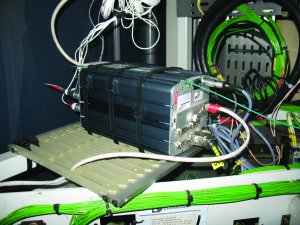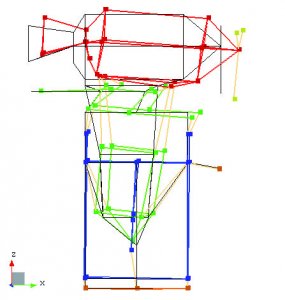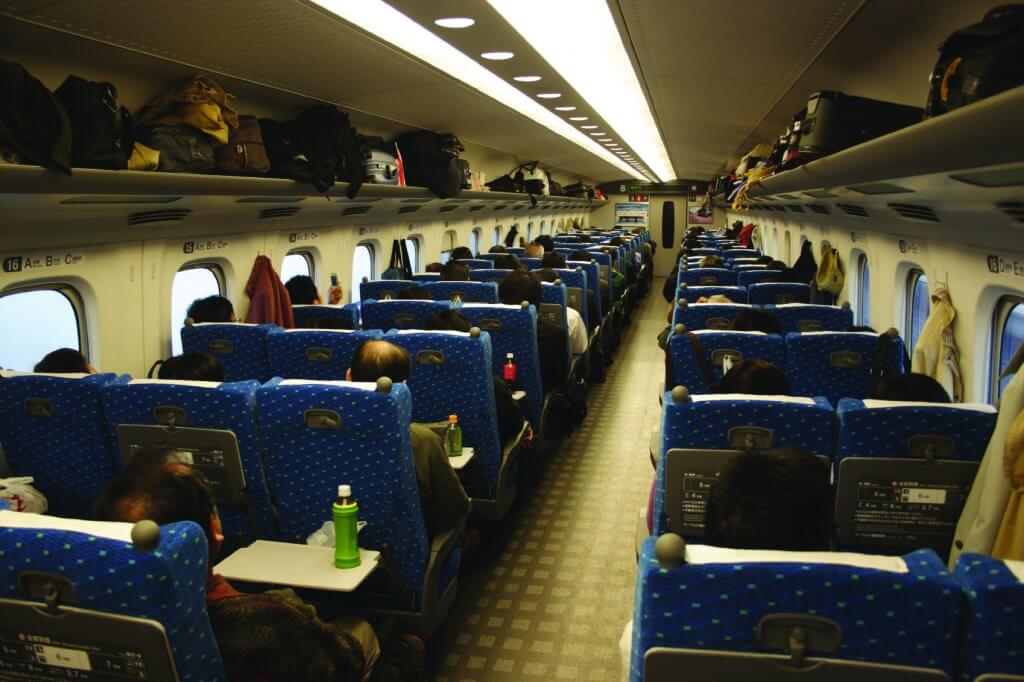Vibratory Stress
Eurailtest offers tests to evaluate vibratory stresses and their effect on passengers comfort and on the life of vehicle components. To understand the structure behaviour, a modal analysis can be conducted.
Passenger vibratory comfort
Assessing the comfort experienced by passengers on a train.
Tests objectives :
- Characterize vibrations inside a railway vehicle as a function of track condition
- Determine dynamic characteristics of train seats (natural frequencies)
Tests facilities :
- Measuring devices installed at the passenger-seat interface
- Device for conducting measurements at floor level
- Dedicated system for automatic analysis
- Accelerometer chain (with or without passengers)
- Data acquisition system (4 to 16 channels)
- Data acquisition system (SCADA type) coupled with TestLab LMS software (full measurement)
Accreditations :
ISO/IEC 17025 awarded by COFRAC
Testing norms :
EN 12299 – Ride comfort for passengers – Measurement and evaluation
UIC 513 – Guidelines for evaluating passenger comfort in relation to vibration in railway vehicles
Vibration fatigue of vehicle components
Optimizing rolling stock maintenance by evaluating the severity of vibratory stresses and their effect on the life of vehicle components via tests conducted on the line.
Tests objectives :
- Predict life expectancy of a rolling stock component with regard to the stresses measured
- Quantify severity of various vibratory stresses applied on vehicle components using a method based on Fatigue Damage Spectrum (FDS) and Shock Response Spectrum (SRS) calculations
- Compare FDS of vibratory signals measured on components “Normative and functional FDS”, calculated from the Power Spectral Density (PSD)
- Understand the causes of failures and check that repaired parts keep their integrity over time
- Study component behaviour on track and in revenue service traffic – with or without people onboard (“black box” test)
Tests facilities :
- Multi-channel data acquisition device
- Calibrators
- Data processing software
- Portable and independent recorder “CleA”
- Measuring system PULSE
- Piezoelectric accelerometers, strain gauges, force sensors, displacement and pressure sensors, ammeters, voltmeters, etc.
- Shakers (various frequencies)
Testing norms :
EN 61373 – Rolling stock equipment – Shock and vibration tests
MA 42100 – Authorization to perform measurements on trains in revenue service

Modal analysis
Determine the modal characteristics of a structure – in addition to vibration testing for example.
Tests objectives :
- Understand vibratory phenomena
- Adjust “finite element” models
- Measure the in-situ response of a structure subjected to one or several known excitations in order to determine its modal characteristics – frequency, damping, modal deflection curve associated with each mode

Tests facilities :
- Piezoelectric accelerometers
- Impact hammers
- Electrodynamic exciter
- Modal analysis software « LMS TEST LAB »
Testing norms :
ISO 7626-1 – Mechanical vibration and shock – Experimental determination of mechanical mobility – Part 1: Basic terms and definitions, and transducer specifications
ISO 7626-5 – Vibration and shock – Experimental determination of mechanical mobility – Part 5: Measurements using impact excitation with an exciter which is not attached to the structure

Please complete the contact form. One of our engineers will be in touch with you as soon as possible.
Go to formOur references
ALSTOM
BOMBARDIER
LOHR INDUSTRIE
RATP
SNCF
STADLER




